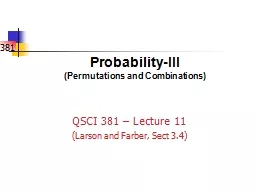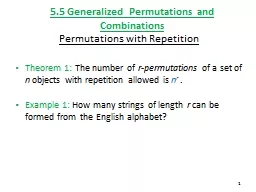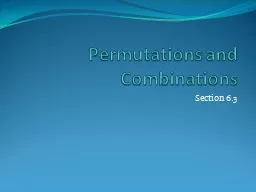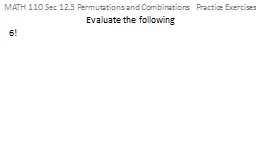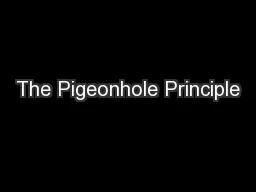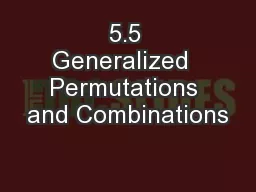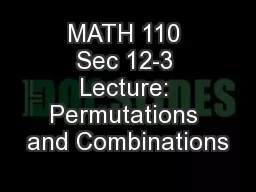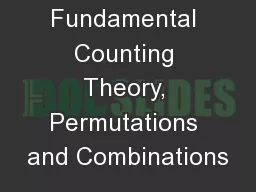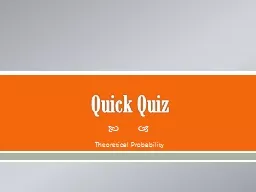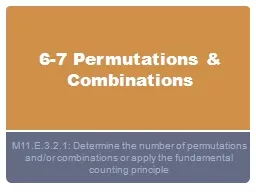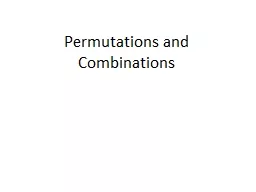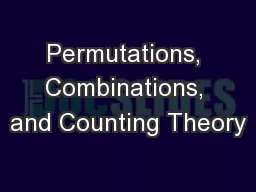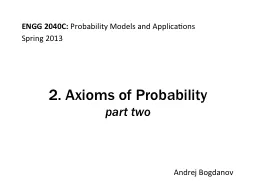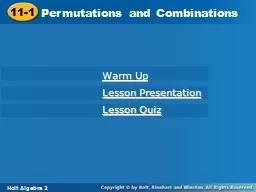PPT-Probability-III (Permutations and Combinations)
Author : cheryl-pisano | Published Date : 2019-06-22
QSCI 381 Lecture 11 Larson and Farber Sect 34 PermutationsI A is an ordered arrangement of objects The number of different arrangements permutations of n different
Presentation Embed Code
Download Presentation
Download Presentation The PPT/PDF document "Probability-III (Permutations and Combin..." is the property of its rightful owner. Permission is granted to download and print the materials on this website for personal, non-commercial use only, and to display it on your personal computer provided you do not modify the materials and that you retain all copyright notices contained in the materials. By downloading content from our website, you accept the terms of this agreement.
Probability-III (Permutations and Combinations): Transcript
Download Rules Of Document
"Probability-III (Permutations and Combinations)"The content belongs to its owner. You may download and print it for personal use, without modification, and keep all copyright notices. By downloading, you agree to these terms.
Related Documents

